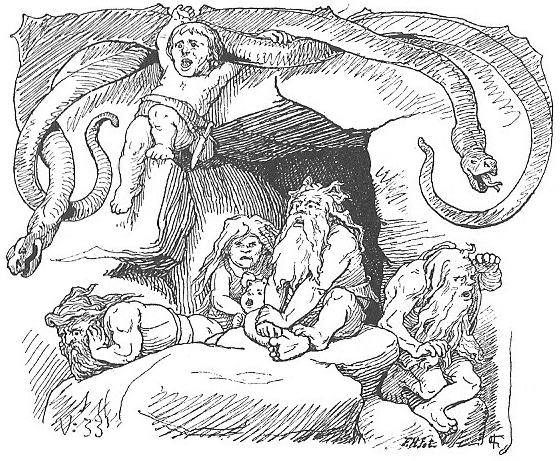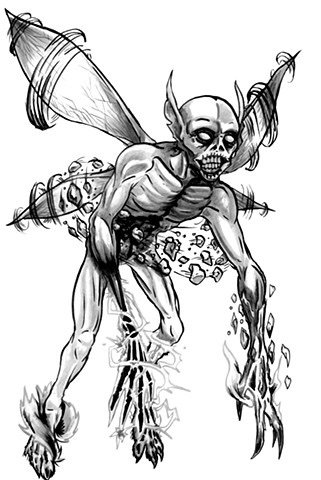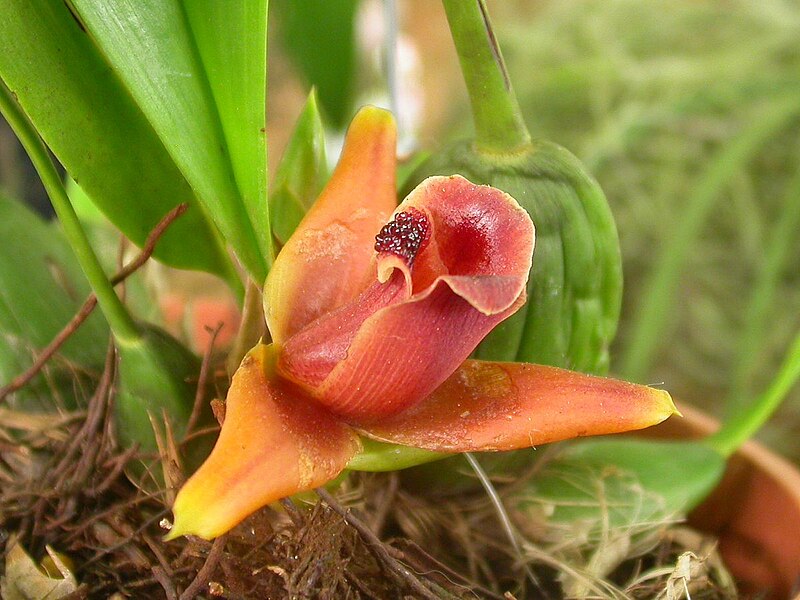The following races are fairly common and found throughout the continent.
Bogey: They are found throughout the continent and have many communities. They are particularly populous at the Gazebo, the largest city in Hodgepocalypse South America.
Connected Myths: Duende
Gremlins detail, from- The Gremlins will get you if you don't watch out^ - NARA - 535062 (cropped).tif between circa 1942 and circa 1943 Public Domain
Cats: Cats came back to South America, much like everywhere else just recently. They have taken the various kingdoms under their paws and often act as ambassadors between rival kingdoms. The Cybercult does not think highly of them, but so far relationships between the church and the cats have been civil.
A great many cats learn to be rainmakers as there are myths of cats spirits demanding tribute to avoid bringing storms to an area.
Connected Myths: Cactus Cat, CCoa
Cats in a Row (3275766840).jpg Argentina Anthony Arrigo Creative Commons Attribution 2.0 Generic license.
Dwarves: They are fairly rare across the continent. They generally live on their own homesteads and don't like visitors. They act as guardians of some of the worst conduits between South America and the Hallowed World.
Dwarves Before Stone by Frølich.jpg Lorenz Frølich Public Domain
Elves: The Caribbean has one of the largest elven population where most communities act as raiders and traders. The Fair Folk has also adapted to the many forests of the continent.
Connected Myths: Madremonte
Madre Monte-obra de José Horacio Betancur.JPG SajoR Creative Commons Attribution-Share Alike 2.5 Generic license.
Feylin: While there are many tales of tiny faerie like creatures in myth, it appears that they were replaced by the by Feylin. While more sociable, they are often mischievous in their obsession to “make it big.” Many are avid watchers of old Latin Soap Operas and often try to duplicate their antics.
Connected Myths: Acalica,
20eabeb8f23cddf31698f6d08433d3627e1dd012r1-321-480v2_hq.jpg
The L.A.B.Site: Lorenzo Angel Bonilla
lorenzobonilla.com
F1D0: The cybercult brought over many F1d0s as pets and companions and many have managed to run free over the continent.
Big Dog robot - D60 Symposium - Defense Advanced Research Projects Agency - DSC05557.jpg Daderot
Creative Commons CC0 1.0 Universal Public Domain Dedication.
Froggies: These Libertarian froggies have flocked to the continent. Many frog myths of Latin America include tales of sorcery, shamanism, and curing, which the froggies happily capitalize on. They often end up doing "medicine shows" that travel from place to place. But there is a movement in Froggy culture where they need to go back to nature and have set up compounds deep in the Amazon Rainforest on behalf of the "great earth toad mother."
Golden-eyed tree frog (Agalychnis annae) 1.jpg Charles J Sharp Creative Commons Attribution-Share Alike 4.0 International license.
Gnomes: Most Gnomes are outsiders and live in hidden places. They have settlements in the garden where they drain the mystical energy not unlike a rubber tree plantation so they can build their villages in relative safety.
Connected Myths: Bakru, Caipora, Desana, Mapinguari, Saci Perere
Haraak: The Haraak followed the dinosaurs onto the continent and are convinced this is the promised land. Their knowledge of herding dinosaurs has become a valuable commodity and they often command top G-bill. Unfortunately, they know this as a people and it often leads to patronizing attitudes when it comes to outsiders.
eb9ca706c7525dd2085c0d6b207cdf84/tumblr_pwm3ugZs1t1qlah72o1_1280.png Cait May used without permission.
Harvesters: Many of these mad scientists of the plant world have descended into the garden and have decided to make it their life’s work. Many have heard voices whispering in their ear of a new era of plant kind with an urge to catalog and figure out new material to create into "experiments."
Mapinguari desvauxianus.jpg Dalton Holland Baptista Creative Commons Attribution-Share Alike 3.0 Unported license.
Medusa: These intellectual, but monstrous species are common in the Andes. They claim ancestry from the "serpent goddess" but little evidence has been obtained in any way, shape or form.
Clevelandart 2005.176.jpg 2005.176 Public Domain
Minotaurs: While not as common as north America, The Minotaurs have adapted their love of music and mixed in native music with their love of rock and metal. Those less musically inclined end up on pampas as gauchos. 
Stumpies: Many stumpies have decided to homestead the continent. They prefer the many rainforests but are often not picky.
Funky Funghi (5156255130).jpg Brisbane City Council Creative Commons Attribution 2.0 Generic license.
Trollitariot: These are relatively a new creature from the Times of Revelations and have developed many settlements in the Andes. They live in high settlements and raise pterodactyl for transport.
Ungo: The most common Ungo of South America is usually tall and black-furred and often have giant sloth-like qualities. Many have come to nearby cities to seek their fortune.
Connected Myths: Boraro, Chivato, Chorti, Curinqueans, Mapinguari, Pombero,Yurupari
Mylodon model.jpg Dan Lundberg Creative Commons Attribution-Share Alike 2.0 Generic license.
Vampires: Many vampires had wormed their ways to the elites of the various South American city-states until the Time of Revelations. While most were turned into ash during this time, there are still some nomadic tribes in places like Patagonia and the Garden.
Hairyvampireskull.jpg Elliot, Daniel Giraud, 1835-1915 Public Domain
#drevrpg #5e #apocalypse #dnd5e #dungeonsanddragons #dinosaurs #races

.tif/lossy-page1-567px-Gremlins_detail%2C_from-_The_Gremlins_will_get_you_if_you_don't_watch_out%5E_-_NARA_-_535062_(cropped).tif.jpg)
.jpg/800px-Cats_in_a_Row_(3275766840).jpg)




_1.jpg/770px-Golden-eyed_tree_frog_(Agalychnis_annae)_1.jpg)



%2C_Early_Intermediate_Period_-_Nose_Ornament_with_Decapitators_and_Human_Heads_-_2005.176_-_Cleveland_Museum_of_Art.tif/lossy-page1-800px-Peru%2C_North_Coast%2C_Moche_culture_(50-800)%2C_Early_Intermediate_Period_-_Nose_Ornament_with_Decapitators_and_Human_Heads_-_2005.176_-_Cleveland_Museum_of_Art.tif.jpg)

.jpg/800px-Funky_Funghi_(5156255130).jpg)



No comments:
Post a Comment
Note: Only a member of this blog may post a comment.